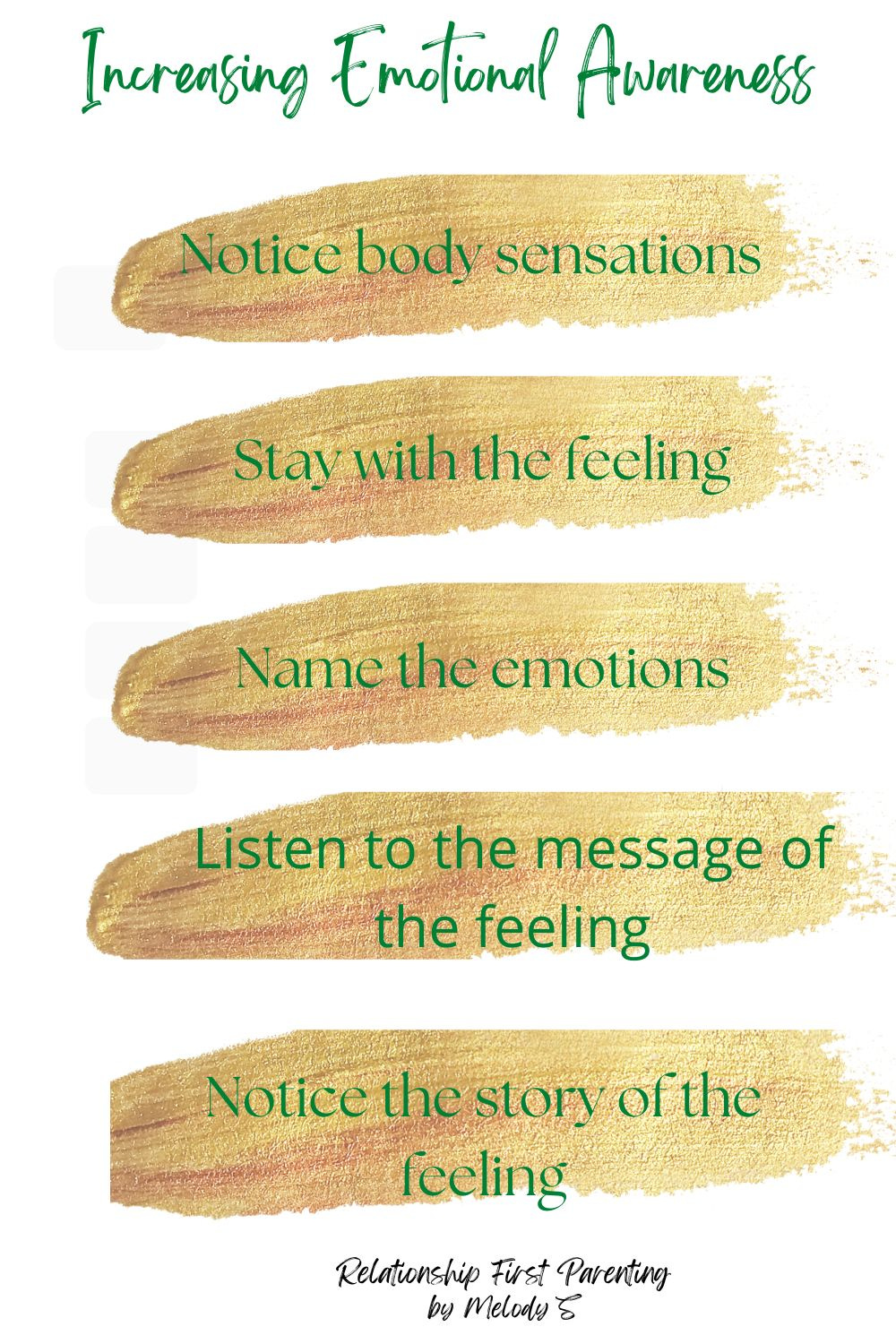Most of us have never learned how to feel or handle our emotions.
Mainstream parenting shames and represses feelings. No one can handle their child's emotions without learning to handle theirs first. Learning emotional awareness, feeling your feelings, and expressing them can seem like a daunting task.
It is an important journey for relationship parenting.
We need to learn to name, feel, and express emotions.
People who suppress their emotions believe they will lose control if they express them. There are a couple of ways that we can learn to handle our emotions without losing control. Self-care and self-calming practices are important. Learning to label your emotions and discover the need behind them.
All feeling comes from a need — met or unmet.
So how do you feel?
Start noticing your body sensations and feelings you are aware of. I use emotion and feeling interchangeably, but science labels emotion as the body sensation and feeling is the subjective perception of the emotion. Feeling includes the story we attach, such as anxiety and excitement, have the same sensation in the body, and we can decide what it means. If we attempt something new, our stomach swirls and heart beats faster. We can label the emotion fear or excitement.
We need to notice both for emotional awareness.
When you have a feeling, sit with it.
Welcome the emotion. Emotions are communication. Do not run from them. They have a message for you.
Name the emotion.
The feeling wheel is a great tool for exploring the nuances and complexity. There are six basic emotions: anger, sadness, happiness, fear, surprise, and disgust. But each feeling can be more complex. Fear could be insecurity or scared for our lives because there is a fire. Sad could be hurt or lonely.
Becoming more precise helps raise our self-awareness.
Emotions can be experienced in layers or more than one.
If you are dealing with anger, especially, there is likely another emotion under the surface: fear or sadness. Along with negative feelings, do not forget to notice your positive feelings: joy, excitement, fun. If you can explore big, deep, chronic emotions in a journal. Talk to your emotion. Listen to the message the feeling has for you. Write about it, draw about it.
Notice in your body where the emotion occurs and give it a name.
Sometimes biology amplifies emotions.
Hungry, tired, dehydration, and hormones. Lack of movement or daily sunlight. A five-minute break outside makes an enormous difference.
Learning what is driving your emotions is an important part of managing emotions.
This week, I want you to check in with yourself a few times a day and write down what emotion you are experiencing and the feeling that comes with it. Extra credit if you notice what need is being met — or not met.
The journal this week will include a chart for tracking your feelings.
This is version 2.0 of this course. To go along with the course, I have started a Facebook group where you can ask all your questions. The lessons will be posted there as well as guides.
I have also created a journal for each week. You can download and print the pdf or make a copy of it in Googledocs to answer. You can share your answers in the comments of each post, or in the Facebook group.




